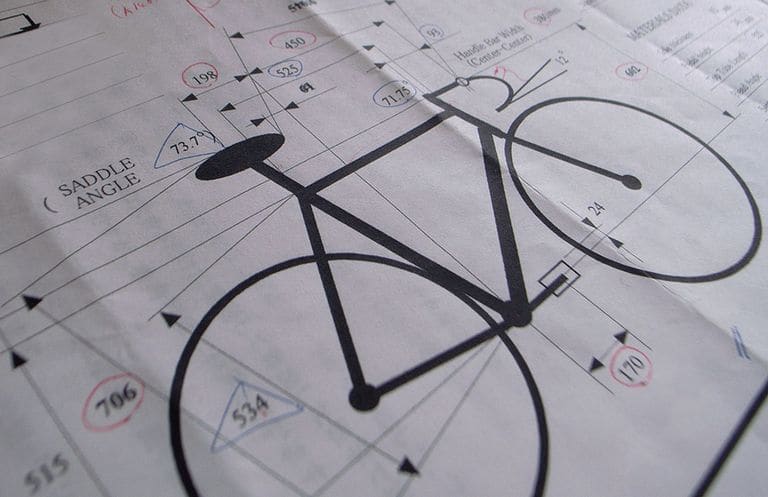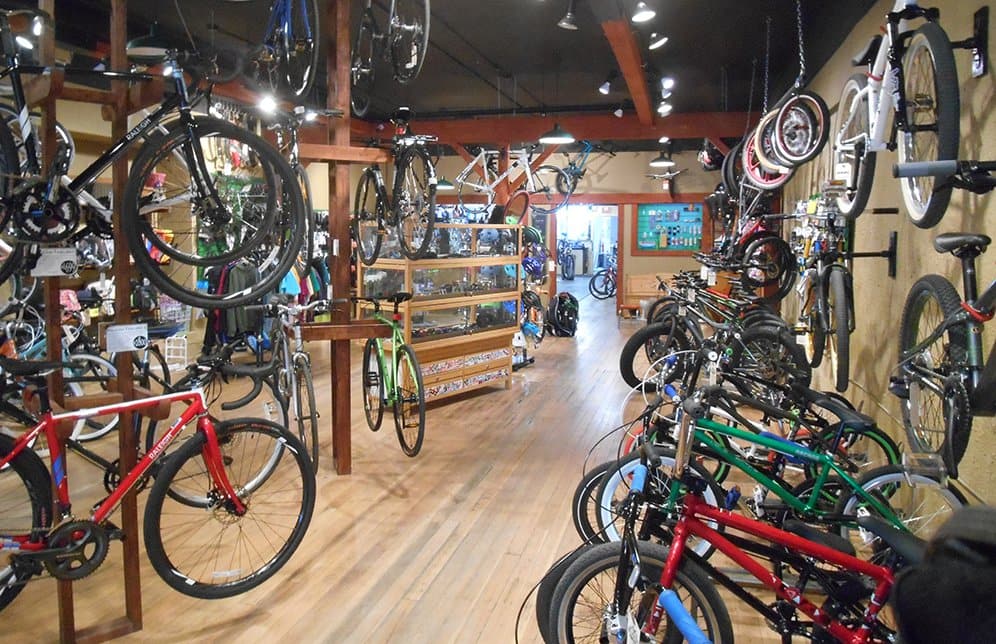10 Things To Avoid When Buying A New Bike
Swept up in the excitement of researching and picking up a new ride, we're all apt to make some mistakes - but make sure to avoid these big ones.
As new bikes trickle into shops across the country, you’re going to be tempted to buy one. But the road to cycling nirvana is littered with potential mistakes. Here’s what not to do when buying a new bike.
Don’t Buy Without Taking a Test Ride
You don’t know how a bike truly fits or handles until you’ve hopped in the saddle and taken it for a test spin. Try to do more than a simple pedal around the parking lot; some local bike dealers have demo bikes you can rent or borrow, and many bike manufacturers offer free demo days at shops and parks throughout the year. Talk to a salesperson to learn about your options.
Don’t Test a Bike at a Shop, Then Buy Online
Definitely test ride a bike at your local shop and bombard the salesperson with any questions you may have, but don’t use that knowledge to buy the same bike online for a few bucks less. That’s bad form. And whatever you do, don’t expect more free advice when you bring the bike you bought online into that same shop to fix a problem.
“Our time is worth money,” said Adam Rodkey, a manager at Bikesmiths. “If I’m giving you my expertise to make someone else money, well, that’s just bad business.”

Don’t Visit Just One Shop or Ride Just One Bike
Brand loyalty can be a great thing, but just because you’ve always ridden Cannondale bikes, it doesn’t mean you can’t experience how a Santa Cruz or a Salsa rides. You’ll either reaffirm your love for Cannondale or find a bike that fits you even better. Either way, it’s a win.
Don’t Settle on a Bike
If you don’t like the way a bike handles or looks, or it doesn’t fit quite right, don’t buy it just because you’re getting a great deal. You’ll likely own the bike for several years and spend plenty of hours on it, which means you should be really comfortable with the package you’re getting.
“A friend was buying his dream bike, a [Pinarello] Dogma, not too long ago,” says John Gatch, mechanic for the Lionhearts Developmental Team. “He could have gotten a black-on-black model right then, or he could wait until June and get the silver-on-black model he really wanted. He knew if he got the black-on-black Dogma, it would bother him every time he went on a ride. He didn’t want to be kicking himself, wondering why he didn’t just wait a couple of months.”
Don’t Be Reluctant to Engage the Salesperson
The Internet is filled with information about various bikes, so it’s easy to think you don’t need assistance. But many bike companies offer specialised online training on their models to shop staff, Kuchy said, giving them access to information you may have overlooked.
“Make sure the salesperson is asking you just as many questions as you are asking them,” says Tim Mendoza, former manager at Plano Cycles. “A good shop with good staff should be trying to benefit the customer first, not just land a sale.”
Don’t Buy a Bike that Doesn’t Align with Your Riding Goals
“Be honest about the type of riding you will do and then focus on those strengths when bike shopping,” O’Donnell says. “Don’t buy a pure race bike, then complain because it’s uncomfortable on centuries.” Beware of any bike that needs significant modification to work for you – component swaps get expensive, and large fit adjustments (like adding a stack of headset spacers or a super-long stem) can change the character of the bike completely. A few tweaks are fine, but if you find yourself with a long list of things you’d like to switch, shop around to see if there’s another bike that better fits your needs.
Don’t Skip the Accessories
Many new riders budget a certain amount for a bike, but completely forget about the accessories they’ll need, according to Colin Kuchy, a territory manager for Trek. At the very least, Kuchy suggests walking out with a helmet, quality shorts with chamois padding, a floor pump, bottle cages, and bike lights. Spare tubes, tyre levers, and either a small pump or CO2 inflator and cartridges are also must-buys.
Don’t Forget to Ask about Discounts and Special Offers
Buying a bike is a lot like buying a car: You may love that gorgeous Subaru sitting on the lot, but you’re not going to buy it without haggling with a salesperson. Why should it be any different when you’re buying a Specialized? You may or may not be successful – profit margins on new bikes typically are fairly small – but you can often negotiate a discount on higher-margin accessories pretty easily.
Don’t Skimp on a Proper Fit
Have the salesperson confirm you’re buying the right-sized bike, then make an appointment with the shop’s professional fitter to get everything dialed. Most decent-sized shops have some type of bike-fitting service, whether it’s an old-school set up with a plumb bob and a tape measure, a more high-tech Retul 3D motion-capture system, or something in between.
“Riding an ill-fitting bike is like driving a nice sports car with four of those little spare-tire doughnut wheels,” Gatch says. “You’re not only wasting watts without a good fit, you’re also risking (a repetitive stress) injury.”

Don’t Walk out of the Shop Forever After You Buy
When you buy a bike at a shop, you’re also entering into a relationship. Many local shops offer a complimentary 30-day tune-up and free adjustments for at least the first year, not to mention advice and expertise.
Don’t know how to change a flat or properly lube your chain? See if the shop offers any maintenance clinics, or ask the shop wrench to show you how. Many mechanics will gladly walk you through the steps of routine maintenance and basic repairs, especially on slow days.
Don’t Rule Out a Custom Bike
If you’re an experienced rider who can’t seem to find a bike with the particular qualities you desire, consider having one custom-built. After getting a client’s measurements, O’Donnell will ask about his or her experiences with previous bikes, including what characteristics they loved and what they didn’t like; component and paint choices; and, of course, budget. O’Donnell documents every step of the process – from the steel tubes being cut, to the frame returning from the painter – and shares photos with the client through e-mail and social media. In the end, the customer gets a gorgeous bike built exactly to his or her specifications for less than the cost of a super-high-end race bike.
READ MORE ON: bikes buying a new bike gear new bike



